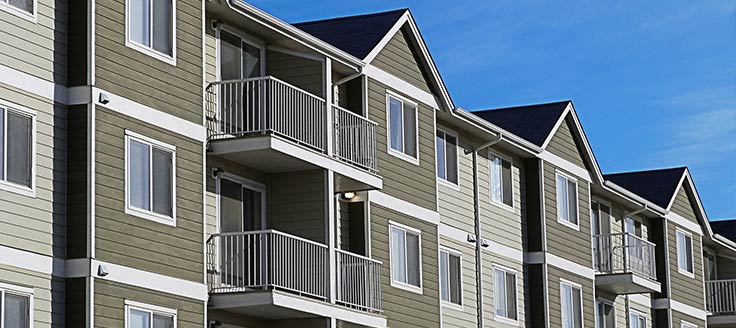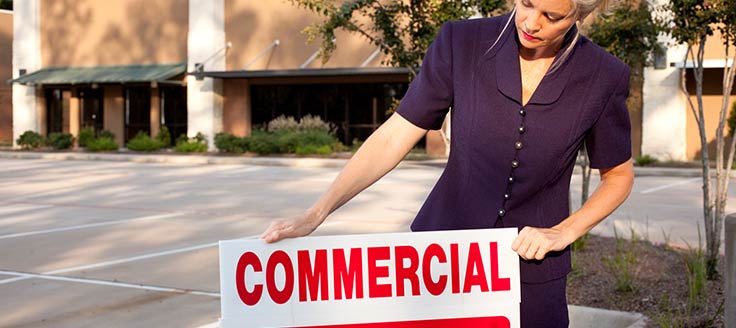A cap rate calculator helps investors evaluate the profitability of a property. Here’s our guide to what capitalization rate is, how the cap rate formula works and how to apply it to make more profitable real estate investment decisions.
Capitalization Rate: What Is It?
The capitalization rate, or the cap rate, compares the income generated by an investment property (net operating income) with the property’s current market value.
Investors use the resulting ratio, expressed as a percentage, to determine whether a property represents a profitable investment. A real estate cap rate calculator can help investors spot good opportunities while steering them away from properties that aren’t worth the investment.
-
ROI vs. Cap Rate
Note that return on investment (ROI) and capitalization rate are different measurements. Both calculate a rate of return, but cap rates compare an investment property’s value against other places in the area. In contrast, ROI reviews a property’s performance against your financial investment. Also, in ROI vs. cap rate, your ROI calculations include mortgage payments while the cap rate formula doesn’t.
The Cap Rate Formula
The basic formula in figuring the cap rate is fairly simple. First, you obtain a ratio by dividing net operating income (NOI) by current market value (CMV), and then you multiply the result by 100 to express it as a percentage:
NOI / CMV * 100
For instance, let’s say a property’s net operating income is $18,000 and its current market value is $200,000. The cap rate would then be 9%:
$18,000 / $200,000 * 100 = 9%
This percentage represents your expected return rate from the property over a year.
An online real estate cap rate calculator can crunch these numbers quickly as long as you know what data to enter. Let’s take a closer look at what net operating income and current market value are and how to determine them when using a simple cap rate calculator.
Net Operating Income
To determine net operating income (NOI), you need to know a few variables:
- The gross rental income (GRI) you would earn if all units in the property were occupied
- The occupancy rate (OR), representing the average percentage of units occupied at any given time
- Your operating expenses (OPEX)
To determine the net operating income, multiply gross rental income by occupancy rate, and then take the result and subtract your operating expenses:
NOI = [GRI * OR] – OPEX
For instance, if gross rental income is $120,000, occupancy rate is 75% and operating expenses are $30,000, net operating income is $60,000:
($120,000 * 75%) – $30,000 = $60,000
Most property owners calculate gross rental income monthly. You can multiply your monthly gross rental income by 12 to get your annual gross rental income.
Occupancy rate applies for properties with more than 1 unit. If a property only has 1 unit, your occupancy rate is 100% when the property is occupied, which is the same as multiplying by 1, so you can just use gross rental income in this case.
Operating expenses include items such as:
- Taxes
- Insurance
- Management fees
- Maintenance and repairs
- Utilities
- Accounting
- Legal fees
- Miscellaneous expenses
Current Market Value
Current market value (CMV) is simply the property’s fair market value (FMV), which is the price you would expect to get for a property if you sold it on today’s market.
You can determine this by asking a real estate agent for comparative market analysis (CMA). The real estate agent will consider the property’s location, square footage and the number of rooms and compare it with similar properties in the area to estimate its value. Most real estate agents will perform a comparative market analysis for free.
For a more accurate and authoritative evaluation, you can contact a licensed real estate appraiser, who will do a deeper analysis than a real estate agent. Appraisers charge a fee for this service.
For a very rough estimate of fair market value, you can use an online tool for estimating property value, such as Zillow’s Zestimate tool.
Real Estate Cap Rate Calculator
You can use the cap rate calculator to determine your investment property’s rate of return.
When to Use the Cap Rate Formula
Using a property cap rate calculator can be helpful in many situations, including:
- Purchasing an apartment building
- Buying a single-family home, multifamily property, duplex, triplex or fourplex to rent
- Investing in a commercial property
- Preparing to sell a rental or commercial property
- Considering refinancing a property
Keep in mind that figuring the cap rate isn’t especially useful when you aren’t planning to rent a property. For instance, if you’re flipping properties. When dealing with properties that involve long-term borrowing, such as commercial properties, you might wish to use an alternate way of calculating the return on investment — the cash-on-cash return. Then compare the results with what you get from using a commercial real estate cap rate calculator.
It’s also important to realize that the cap rate isn’t the sole determinant of a property’s value. The property cap rate can be influenced by factors such as location and market trends. For a complete picture, consider the rate alongside other methods of evaluating properties.

Evaluating the Cap Rate for Real Estate
How do you interpret your results when making investment decisions? Here are some general guidelines:
What’s a Good Property Cap Rate?
Real estate investors generally consider 4% to 10% a good cap rate for a rental property (or other commercial property); a cap rate of 10% or more is preferable. However, this can vary by market.
A higher cap rate can be more appealing to investors because it offers a better rate of return; however, a higher cap rate indicates the property is a bigger risk. For example, it could be in a community without a steady influx of residents or businesses to rent properties, increasing the risk of apartments or storefronts sitting empty. In contrast, a 4% cap rate might not be as initially enticing to investors, but it also signals that there’s less risk that a commercial property won’t yield a decent rate of return. You’ll see lower cap rates tied to properties in locales that usually have a steady stream of potential tenants.
A forward-looking real estate investor should consider a property’s projected performance as well as its current cap rate. Rates can change as property values change. So what might be a good investment today may not be as good tomorrow, while other properties that don’t look as promising today could rise in value in the future.
Capitalization Rate Variances in Suburban vs. Urban Areas
Location plays a significant role in real estate values, so there are differences between suburban and urban commercial property cap rates. For example, a good cap rate in a large city with expensive properties such as San Francisco might differ significantly from good cap rates in a market such as Indianapolis.
In urban areas that are in demand for real estate and have diverse, strong economies, cap rates are lower — sometimes 4% or 5% — because there’s less of a vacancy risk for residential and commercial rental properties. These urban properties with low cap rates are a more stable investment, but they pose less potential reward than suburban or rural properties with higher cap rates. Commercial properties in non-urban areas with smaller populations and less robust economies pose a greater risk of low occupancy (or even no occupants). This increased risk pushes up the cap rate, maybe to 7% or up to 12%, but the promise of greater rewards can tantalize potential investors.
One exception to this is multifamily rental properties. Their capitalization rates trend lower regardless of location due to the “commoditized nature of tenants” and “higher availability of debt,” according to GowerCrowd.com. Housing is a constant human need, so there’s a smaller risk that economic conditions will dramatically impact demand for apartment or house rentals. The nature of multi-family units also reduces risk to the landlord and any investors. If 1 or several tenants miss rent payments, the cash flow impact isn’t as intense compared to a commercial property that might house only 1 or 2 businesses.











